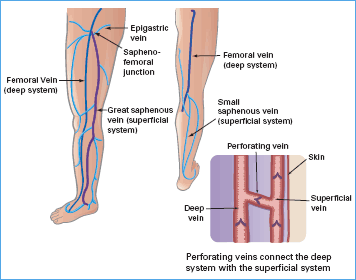Many men and women who suffer from varicose veins also suffer from leg or foot ulcers, yet few understand the connection or how to treat them. There are two basic types of leg ulcers: arterial and venous. This post examines arterial ulcers. Read on to learn how they form and how they’re managed through varicose vein treatment:
Table of Contents
ToggleWhat is an ulcer?

What causes arterial ulcers?
Arterial ulcers occur in men and women with peripheral artery disease, or PAD. Most commonly, they’re seen on the feet, toes and ankles. Here’s how they form: Blood that flows through the arteries is moving away from the heart. It’s enriched with oxygen that it has picked up in the lungs before being pumped out into the rest of the body. This oxygen-rich blood is responsible for providing nutrients to organs and tissues throughout the body, including the skin. But when arterial circulation is compromised, as it is in PAD, the skin begins to break down and lose its ability to serve as a strong barrier to damage. As a result, ulcers begin to develop.
Of course, that also means that because the arterial circulation is compromised, the skin’s cells are not receiving enough oxygen and nutrients to grow new cells rapidly enough to replace ones that are dying. Unless the underlying circulatory problems are addressed, the surrounding tissue will continue to break down and infection can occur and spread.
How are arterial ulcers treated?
Treatment begins by improving blood flow to the area. Your vascular surgeon will know the best ways to accomplish this. In many patients, a combination of blood-thinning medications and varicose vein treatment including vascular surgery can be used to restore circulation. Sometimes, lifestyle changes are recommended – for instance, quitting smoking, which can have a significant bearing on circulation.
The wound itself typically requires multiple dressings and ointments, and depending on the extent, may require antibiotics and other wound care treatments to facilitate complete healing and to prevent the spread of infection to other tissues, including the bone.
As they say, an ounce of prevention is worth a pound of cure. Visiting your South Jersey vein clinic for regular exams and evaluations is critical for avoiding ulcer development and to control other circulation-related issues. Take that first step toward a healthier you and call Vein and Vascular Institute today to schedule your consultation
